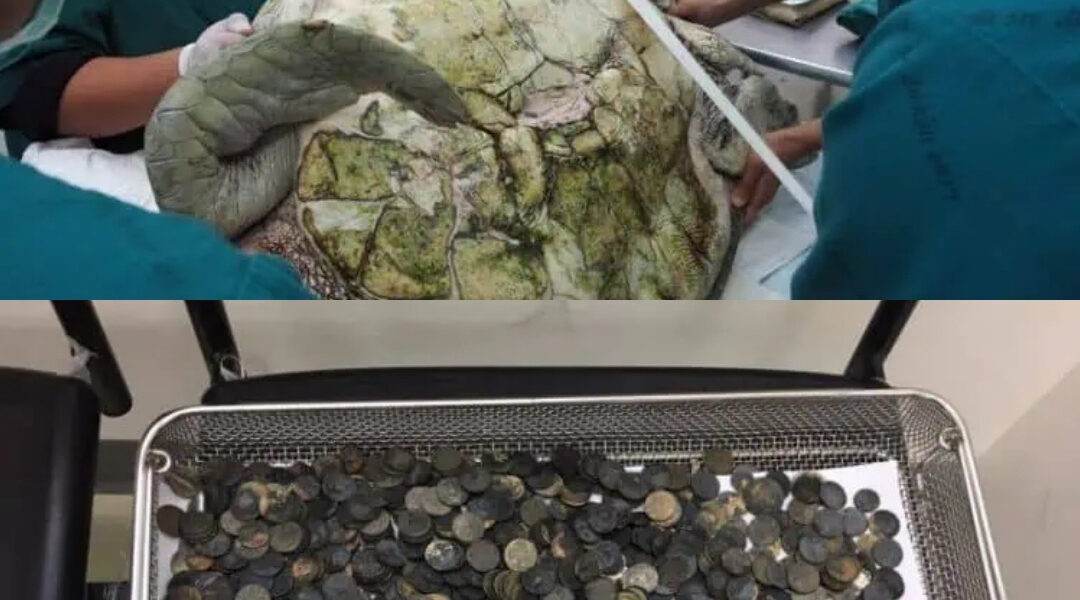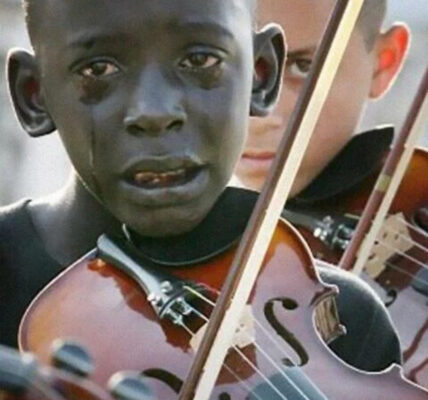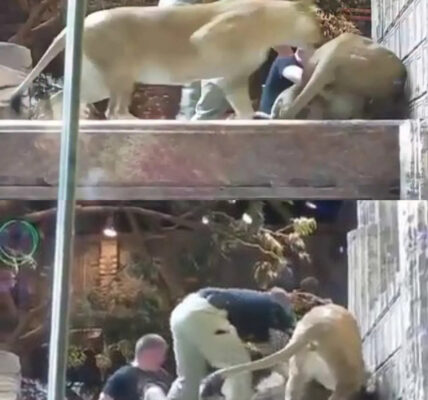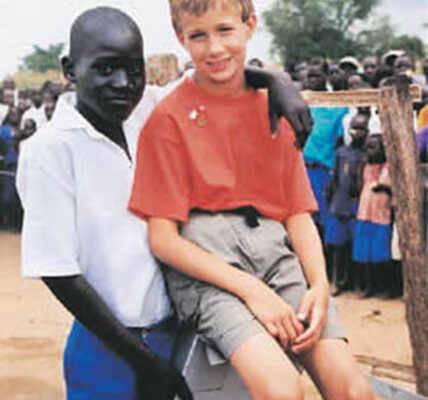In the coastal town of Sriracha, near Bangkok, a green sea turtle named Omsin — which means “Piggy Bank” in Thai — became the center of one of the most extraordinary animal rescues ever recorded. Her story began not with cruelty, but with superstition.

For years, visitors at a local pond had tossed coins into the water, believing the act would bring them good luck and long life. What none of them realized was that their harmless wish for fortune was slowly becoming a death sentence for the creatures below.
Omsin, curious and hungry, had swallowed the coins — one by one, day after day. Over time, the metallic mass in her stomach grew until it became unbearable. The weight pressed against her organs, made it painful to swim, and eventually left her floating weakly at the surface, unable to dive or eat.
When rescuers discovered her condition, they rushed her to Chulalongkorn University’s Veterinary Faculty, where a team led by Dr. Nantarika Chansue prepared for a surgery unlike any they had ever attempted.

It took seven long hours.
Omsin was carefully anesthetized, her shell gently opened to access the stomach beneath. What they found inside left even the seasoned surgeons speechless — a pile of coins weighing over 5 kilograms (11 pounds). Pennies, baht, and foreign coins alike had fused into a solid mass of corrosion and metal, filling her abdomen like ballast.
At one point, the surgeons tried to remove the coins through an incision in her shell, but quickly realized it was impossible. They had to go deeper, working delicately around her organs to remove the last of the metallic debris — coin by coin, piece by piece — until finally, the stomach was empty again.
Omsin herself weighed 59 kilograms, meaning nearly one-tenth of her body weight had been pure metal.

When the surgery ended, there was a heavy silence in the operating room — part relief, part guilt. The team had saved her life, but the reality of what had brought her there was hard to ignore.
Dr. Chansue later told reporters, “It’s heartbreaking. People thought they were making merit, but what they did was cause harm.”
Omsin was placed in intensive care, where she would spend weeks under close observation, her diet carefully controlled, her movements monitored. Her rescuers called her “Piggy Bank” with affection, but the nickname carried a deeper message — a reminder of how thoughtless gestures, even well-meaning ones, can wound the world we share.

Experts used Omsin’s case to warn the public. Tossing coins into ponds, rivers, or fountains might feel symbolic, but for wildlife, it’s deadly. The metals corrode, release toxins, and can be mistaken for food.
As Rungrote Thanawongnuwet, head of the university’s Veterinary Science program, put it bluntly:
“This is not making merit. This is sinning.”
Omsin’s recovery became a national story — not just because of the miracle surgery, but because of what she represented. A gentle creature, harmed by human superstition, given a second chance by compassion and science.
Today, her image serves as a lesson carved into memory: that true good fortune isn’t made by tossing coins into the water — it’s made by protecting the life that swims beneath it.






